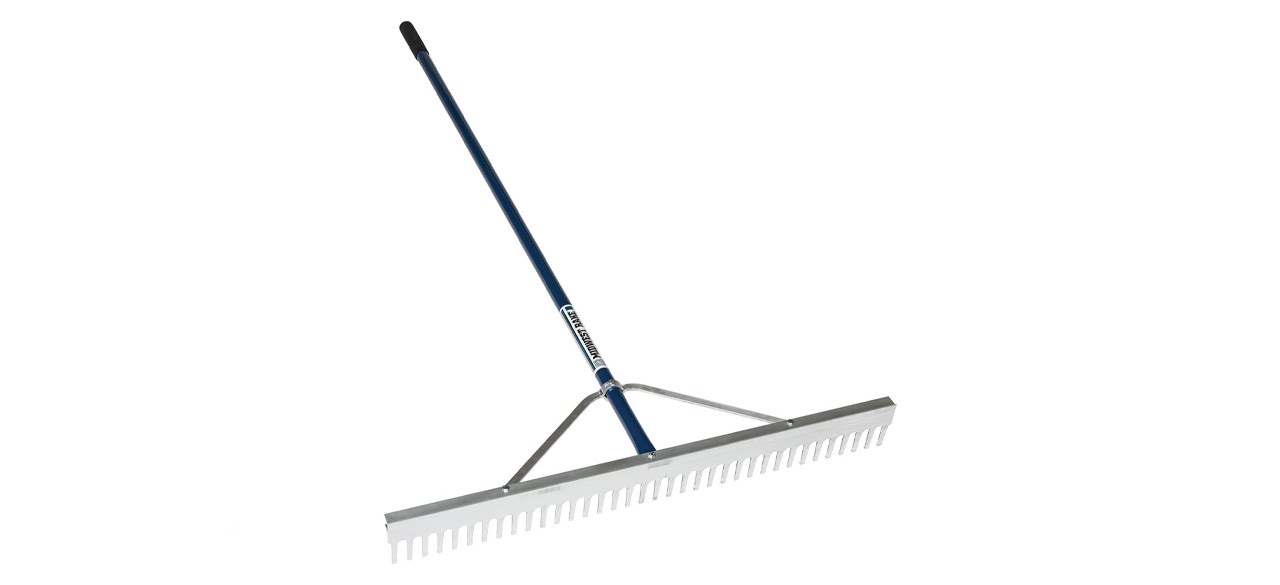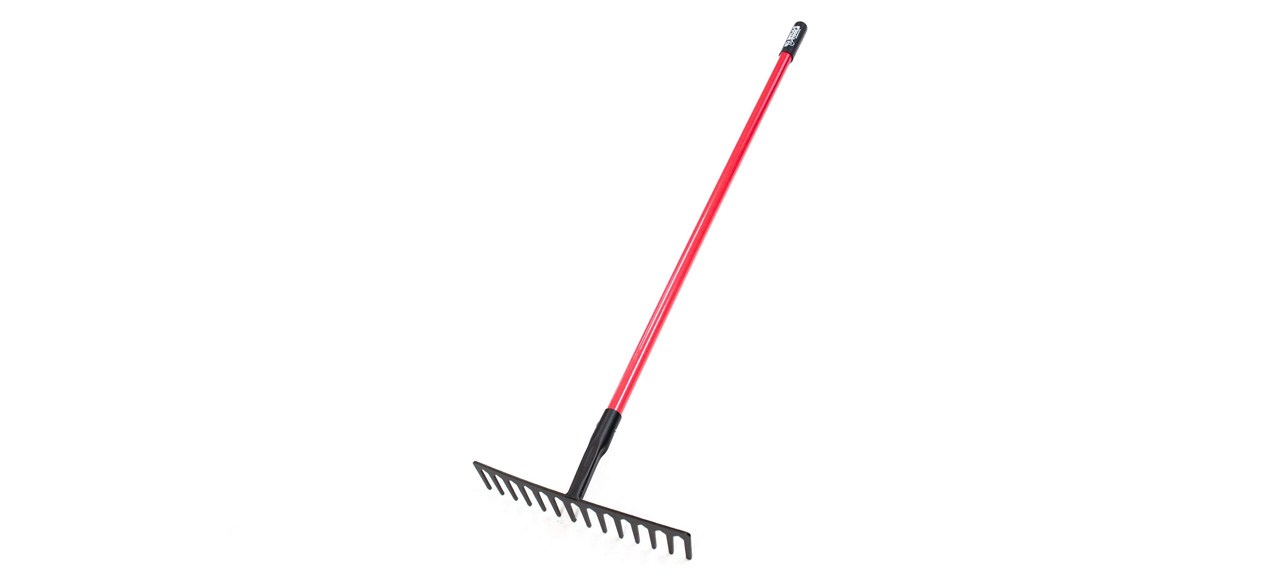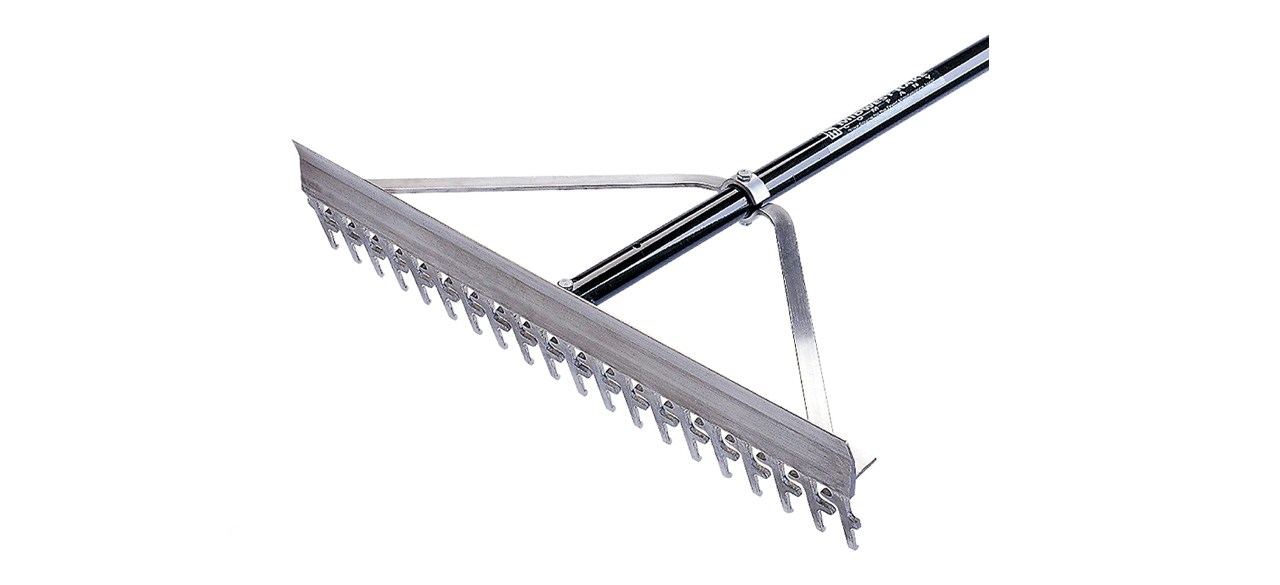Which landscape rake is best?
To keep your yard looking neat, you need a good rake to keep things in order. However, the rake you use to clean up leaves isn’t necessarily the best rake for smoothing out soil, mulch, or gravel. For that type of work — and sifting stones, twigs, glass, and other items from your soil — you need a landscaping rake. It’s stronger and more durable than a traditional leaf rake to handle heavier work. In many cases, a landscaping rake is even sturdy enough to help clear out branches and other materials that wind up in your yard after a big storm.
What to know before you buy a landscape rake
Durability
Landscape rakes must be highly durable because they often have to move rocks and heavy soil, so they’re usually made of steel or aluminum. Steel is stronger and more durable, but it weighs more, which can make it more difficult to use for long periods. Aluminum is strong enough for most landscaping tasks but lighter than steel, making it easier to use.
Check out a landscape rake’s handle. A wooden or aluminum handle is typically sturdier than a fiberglass one, but any of these materials can work well. You may want to choose a rake with bracing that helps strengthen the head.
Assembly
Landscape rakes are relatively large, so they’re often shipped in pieces rather than fully assembled. Most rakes are fairly easy to put together, so you just have to connect the rake head to the handle. Some models also require you to attach the braces.
What to look for in a quality landscape rake
Head
The aluminum or steelhead of a landscape rake has teeth on one side to sift and move soil, sand, and other materials. The other side is usually flat for grading, but some rakes have a special leveling blade that allows for even finer leveling.
Pay attention to the width of the landscape rake’s head. Most heads are between 8 and 46 inches wide. A wider head allows you to move across a larger area, so you can work more quickly. If you want to use the rake in smaller areas, a rake that’s too wide won’t allow you to get into tight spaces.
Teeth
The design of the teeth on a landscape rake plays a crucial role in how it performs. Tightly packed teeth make it easier to capture smaller particles, while longer teeth let you push deeper into the soil. If the teeth’s edges are rounded rather than pointed, you’ll notice less gouging in the ground. Teeth should be made of steel or aluminum so they won’t rust or corrode.
Braces
Landscape rakes with the most durable heads typically feature braces. The sturdiest bracing spans from the head all the way down to the handle, but some braces wrap around the handle for added durability.
Handle
A landscape rake’s handle is typically made of one of three materials:
- Wood handles are highly durable, but they can be pricey and somewhat heavy.
- Aluminum handles are incredibly durable, but they’re lightweight. They can be expensive.
- Fiberglass handles are the lightest option, which is helpful if you rake regularly. They’re not as durable as wood or aluminum.
The length of a landscape rake’s handle is also important. Some handles are as long as 72 inches, which is a good option if you’re tall. Check the grip on the rake’s handle, too. Some rakes have a nonslip, ergonomically designed grip that’s more comfortable in hand for hours of raking.
How much you can expect to spend on a landscape rake
You can pay between $30-$100 for a landscape rake. Lower-quality rakes typically go for $30-$45, but you can get a sturdy, durable model with effective tines for $45-$60. The largest rakes can go for as much as $100.
Landscape rakes FAQ
Q. Can I use my leaf rake for landscape raking?
A. A basic leaf rake usually isn’t strong or durable enough to handle dense dirt, gravel, rocks, and other heavy materials. That’s because its teeth are made of plastic that can snap easily if you use it for landscaping tasks beyond gathering leaves.
Q. How should I clean a landscape rake?
A. After each use, hose down the rake. If there are materials stuck to the teeth, wipe them away with a damp cloth.
What landscape rakes are best to buy?
Top landscape rake
Midwest Rake’s Aluminum Landscape Rake
What you need to know: An incredibly durable rake from a well-known brand that can handle a wide range of landscaping tasks.
What you’ll love: It boasts a 36-inch head, strong teeth that can remove plenty of debris and a perfectly designed edge for grading. The handle is sturdy and comfortable to hold.
What you should consider: Some buyers complain about missing parts or out-of-place drill holes.
Top landscape rake
Bully Tools’ Level Head Rake with Fiberglass Handle
What you need to know: An excellent basic landscaping rake that fits most budgets.
What you’ll love: Its durable design allows it to move plenty of debris. It is made of fiberglass for a lightweight feel, and the teeth are made of seven-gauge steel for improved durability. It is an excellent value compared to the competition.
What you should consider: The 16-inch head is smaller than many other rakes.
Worth checking out
What you need to know: It’s a good rake for moving smaller debris, but it isn’t as effective for larger items.
What you’ll love: It features a sturdy, durable design. It works well for removing small stones and other smaller debris and offers a 36-inch head for faster raking.
What you should consider: It doesn’t work as well for large debris or weeding.
Prices listed reflect time and date of publication and are subject to change.
Check out our Daily Deals for the best products at the best prices and sign up here to receive the BestReviews weekly newsletter full of shopping inspo and sales.
BestReviews spends thousands of hours researching, analyzing and testing products to recommend the best picks for most consumers. BestReviews and its newspaper partners may earn a commission if you purchase a product through one of our links.
Distributed by Tribune Content Agency, LLC.







